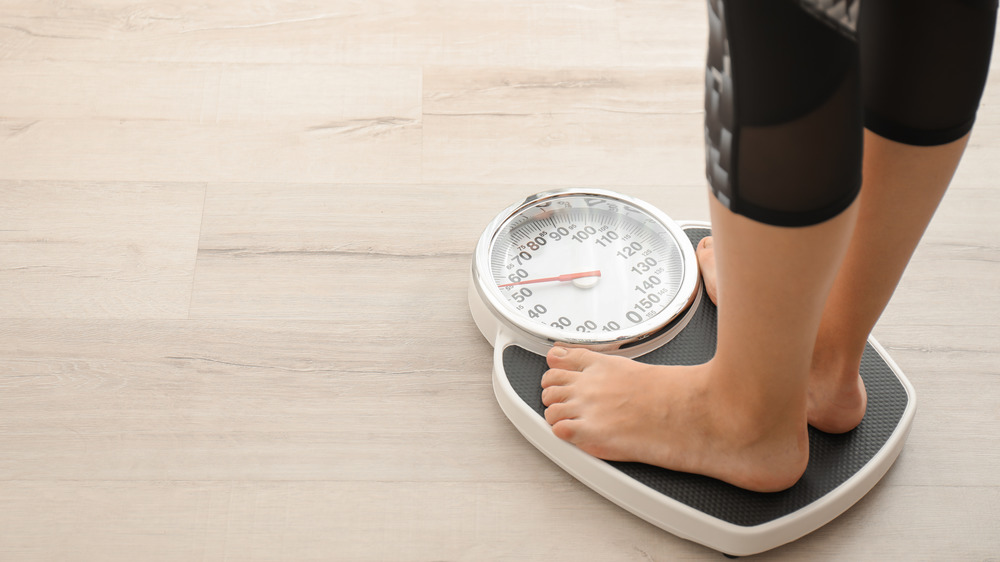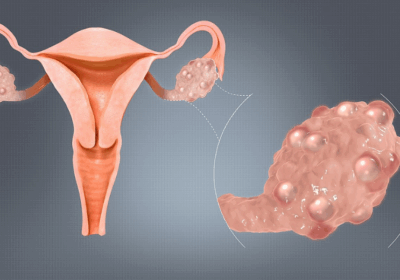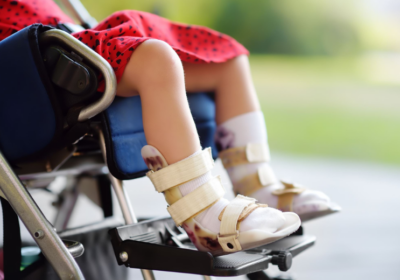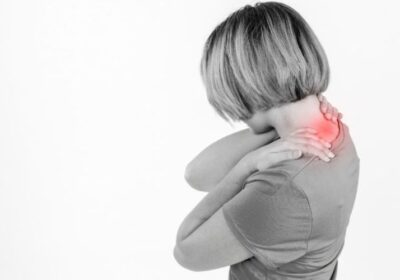AYURVEDA FOR OBESITY: SAY GOODBYE TO CRASH DIETS!

Obesity is a medical condition characterised by excessive accumulation of body fat, which increases the risk of various health problems. It is typically diagnosed based on the Body Mass Index (BMI), which is calculated using a person’s weight and height. According to WHO(World Health Organization):
- A BMI of 25-29.9 kg/m^2 is classified as overweight.
- A BMI of 30 or more Kg/m^2 is classified as obese.
However, obesity is not just about BMI; it also involves factors such as fat distribution, muscle mass, and metabolic health.
OBESITY IN AYURVEDA:
In Ayurveda, obesity is referred to as “Sthoulya” and is classified as a Medo Roga(disease of fat metabolism). It is primarily caused by an imbalance in the Kapha Dosha and impaired Agni(digestive fire), leading to excessive accumulation of Meda Dhatu(Fat tissue).
CAUSES OF OBESITY BASED ON AYURVEDA:
A. Dosha imbalance:
- Kapha Dosha aggravation: Increases heaviness, stability, and moisture in the body, leading to excess fat accumulation.
- Vata imbalance: This can lead to improper metabolism, affecting digestion and fat metabolism.
B. Agni(Digestive fire) dysfunction:
- Manda Agni(Weak digestion): Causes incomplete digestion, leading to Ama(toxins) formation and fat accumulation.
- Medo Dhatu Agni Mandya(Impaired fat metabolism): This leads to excessive production and storage of Medo Dhatu(fat).
C. Lifestyle factors:
- Ati Bhojana(Overeating): Especially foods that are heavy, oily, sweet, and processed.
- Avyayama(Lack of exercise): Leads to excessive kapha accumulation.
- Divaswapna(Daytime sleep): Slows down metabolism and increases Kapha.
- Adhyashana(Eating before digesting a previous meal): Causes indigestion and Ama formation.
- Manasika Hetu(Psychological factors): Stress, anxiety, and emotional eating contribute to weight gain.
CAUSES OF OBESITY:
1. Genetic factors:
- Some individuals inherit genes that predispose them to obesity.
- Specific genes influence metabolism, fat storage, and appetite regulation.
- For example, mutations in the FTO gene(Fat mass and obesity-associated gene) have been linked to increased appetite and reduced satiety.
2. Unhealthy diet and poor eating habits:
- High-calorie, low-nutrient diets contribute to weight gain.
- Excessive consumption of processed foods, sugary drinks, and fast food leads to fat accumulation.
- Overeating, emotional eating and late-night eating can also contribute.
3. Sedentary lifestyle and lack of physical activity:
- Modern lifestyles involve prolonged sitting, reduced physical labour, and a lack of exercise.
- Desk jobs, excessive screen time(TV, smartphones, computers), and lack of outdoor activities reduce calorie burning.
- Physical activities slow down metabolism and promote fat storage.
4. Hormonal imbalances:
Hormones play a crucial role in metabolism and appetite regulation.
- Leptin Resistance: Leptin is a hormone that signals the brain to stop eating. In obesity, leptin resistance develops, leading to overeating.
- Insulin Resistance: Insulin regulates blood sugar levels, and insulin resistance promotes fat storage, increasing obesity risk.
- Thyroid Disorders(Hypothyroidism): A sluggish thyroid gland reduces metabolism, leading to weight gain.
- Cortisol(Stress hormone): Chronic stress increases cortisol levels, promoting fat accumulation, especially around the abdomen.
5. Psychological and emotional factors:
- Emotional eating due to stress, depression, anxiety, or boredom leads to excessive calorie intake.
- Certain mental health conditions, such as binge eating disorders, contribute to obesity.
6. Medications and medical conditions:
Some medications cause weight gain as a side effect:
- Antidepressants(eg: SSRI, tricyclic antidepressants).
- Antipsychotics(eg: Olanzapine, risperidone).
- Corticosteroids(used for inflammation).
- Beta-blockers(used for hypertension).
- Medical conditions such as Polycystic Ovary Syndrome(PCOS) and Cushing’s Syndrome can also lead to obesity.
7. Sleep deprivation:
- Poor sleep quality or insufficient sleep disturbs appetite-regulating hormones(ghrelin and leptin), leading to increased hunger and cravings.
- Sleep deprivation also reduces metabolism and promotes fat accumulation.
8. Gut Microbiome and digestive health:
- The gut microbiome plays a role in metabolism and fat storage.
- An imbalance of bacteria (dysbiosis) can lead to obesity by affecting digestion, inflammation, and energy extraction from food.
9. Environmental and socioeconomic factors:
- Easy access to high-calorie foods and beverages.
- Lack of safe spaces for physical activities(eg: parks, gyms).
- Socioeconomic status affects food choices(cheap processed foods vs healthy fresh foods).
- Cultural habits and traditions that encourage overeating.
CLINICAL SYMPTOMS OF OBESITY:
1. Physical symptoms:
a. Excess body fat:
- Visible fat accumulation, especially around the abdomen, thighs, buttocks, and arms.
- Central Obesity(fat accumulation around the waist) is particularly concerning as it increases the risk of heart disease and diabetes.
b. Shortness of breath(Dyspnea):
- Difficulty breathing even with mild physical exertion.
- Reduced lung capacity due to fat deposits pressing against the diaphragm.
c. Increased sweating:
- Overweight individuals sweat more because fat acts as an insulator, making it harder for the body to regulate temperature.
d. Fatigue and Low energy:
- The extra body weights put stress on muscles and joints, leading to exhaustion.
- Poor sleep quality due to associated conditions like sleep apnea.
e. Joint and Back pain:
- Excess weight puts pressure on joints, especially the knees, hips, and lower back.
- Increases the risk of osteoarthritis and chronic pain.
f. Difficulty with physical activity:
- Reduced mobility and flexibility due to excess weight.
- Quick exhaustion during routine tasks like walking or climbing stairs.
g. Sleep problems and sleep apnea:
- Excess fat around the neck can obstruct airways, leading to snoring and interrupted breathing during sleep.
- This leads to daytime drowsiness and poor concentration.
h. Skin issues:
- Dark patches on the skin(acanthosis nigricans), especially around the neck and armpits, indicate insulin resistance.
- Skin folds may develop due to rashes, fungal infections, or chafing due to excessive sweating and friction.
2. Psychological symptoms:
Obesity can also affect mental and emotional well-being.
a. Low self-esteem and body image issues:
- Social stigma and negative self-perception can lead to anxiety and depression.
b. Depression and anxiety:
- Obesity can trigger or worsen mental health disorders.
- Emotional eating and binge eating disorder(BED) are common in obese individuals.
c. Social withdrawal:
- Fear of judgment or discrimination can lead to avoiding social situations.
- It can result in isolation, loneliness, and further mental health decline.
3. Metabolic and health-related symptoms:
- Obesity disrupts metabolism, increasing the risk of chronic diseases.
a. High blood pressure(Hypertension):
- Excess fat increases blood pressure in the arteries.
- It can lead to cardiovascular diseases and stroke.
b. Insulin Resistance and Type 2 Diabetes:
- Obesity affects the body’s ability to use insulin properly, leading to high blood sugar levels.
- Increase the risk of Type 2 diabetes.
c. High cholesterol and heart disease:
- Excess fat can lead to high levels of bad cholesterol(LDL)and low levels of good cholesterol(HDL).
- Increases risk of heart attack and stroke.
d. Fatty liver disease(NAFLD):
- Excess fat accumulates in the liver, causing inflammation and damage.
e. Digestive problems:
- Higher risks of acid reflux(GERD), gallstones, and constipation.
- It can lead to bloating and discomfort.
f. Hormonal imbalances:
- Obesity can cause irregular menstrual cycles and infertility in women.
- In men, it may lead to low testosterone levels and sexual dysfunctions.
g. Increased risk of certain cancers:
- Obesity is linked to higher risks of breast, colon, endometrial, and liver cancers.
TYPES OF OBESITY:
Obesity is classified based on different criteria, such as cause, fat distribution, and severity.
1. Based on fat distribution(Body shape):
Fat distribution plays a crucial role in determining obesity related health risks.
The two primary types are:
A. Central(Abdominal) obesity(Apple-shaped):
- Fat accumulates around the abdomen and upper body.
- Common in men(android obesity).
- Higher risk of cardiovascular diseases, insulin resistance, and metabolic disorders.
- Measured by waist to hip ratio(WHR)and visceral fat percentage.
B. Peripheral(Gluteofemoral) obesity(Pear shaped):
- Fat accumulates in the hip, thighs, and buttocks.
- More common in women(gynoid obesity).
- Lower risk of metabolic disease, but associated with varicose veins and joint issues.
2. Based on cause:
Obesity can be classified according to its underlying causes:
A. Primary(Exogenous) obesity:
- Caused by an imbalance between calorie intake and energy expenditure.
- Linked to poor diet, physical inactivity, and lifestyle factors.
- Preventable with lifestyle modifications.
B. Secondary(Endogenous) obesity:
Results from underlying medical conditions or genetic disorders, such as:
- Hypothyroidism: Reduced metabolism due to low thyroid levels.
- Cushing’s syndrome: Excess cortisol leading to fat accumulation.
- Polycystic Ovary Syndrome(PCOS): Hormonal imbalance causing weight gain.
- Leptin Resistance: Genetic disorder affecting hunger regulation.
3. Based on severity(BMI Classification by WHO):
Body Mass Index(BMI)is a common method to classify obesity:
CATEGORY |
BMI RANGE(Kg/m^2) |
| Underweight | <18.5 |
| Normal weight | 18.5-24.9 |
| Overweight | 25-29.9 |
| Obesity Class 1(Mild) | 30-34.9 |
| Obesity Class 2(Moderate) | 35-39.9 |
| Obesity Class 3(Severe/Morbid) | >40 |
- Severe Obesity(BMI>40) significantly increases the risk of life-threatening disease.
4. Based on metabolic health:
Not all obese individuals develop metabolic disorders. The classification helps assess health risks:
A. Metabolically Healthy Obesity(MHO):
- Individuals have excess weight but normal metabolic markers(blood sugar, cholesterol, blood pressure).
- Lower risk of heart diseases and diabetes compared to metabolically unhealthy obesity.
B. Metabolically Unhealthy Obesity(MUO):
- Characterised by obesity along with metabolic issues like high blood sugar, high cholesterol, and hypertension.
- Higher risk of cardiovascular diseases and diabetes.
5. Based on fat type:
The type of fat stored in the body determines obesity related risks:
A. Visceral obesity(Organ Fat):
- Fat surrounds internal organs(liver, heart, intestines).
- Hazardous, increasing risks of heart disease, diabetes, and fatty liver.
B. Subcutaneous obesity:
- Fat accumulates beneath the skin, especially in the arms, thighs, and buttocks.
- Less Harmful but can cause mechanical issues like joint pain.
HEALTH RISKS OF OBESITY:
Obesity is a complex medical condition that significantly increases the various health problems, affecting nearly every system in the body. Below is a detailed explanation of the major risks associated with obesity.
1. Cardiovascular diseases:
Obesity increases the risk of heart-related conditions, including:
- Hypertension(High blood pressure): Excess fat tissue increases the workload on the heart, leading to higher blood pressure.
- Coronary Artery Disease(CAD): Obesity contributes to the buildup of plaque in the arteries, restricting blood flow to the heart.
- Heart Failure: The heart has to work harder to pump blood, which can weaken it over time.
- Stroke: Blocked arteries due to fat accumulation increase the risk of strokes.
2. Type 2 Diabetes:
- Excess fat, especially around the abdomen, causes insulin resistance, leading to increased blood sugar levels.
- Obesity is one of the leading causes of Type 2 diabetes, which, if unmanaged, can result in nerve damage, kidney disease, and blindness.
3. Respiratory issues:
- Obstructive Sleep Apnea(OSA): Excess fat around the neck and throat can block airways, leading to interrupted breathing during sleep.
- Asthma: Obesity can worsen asthma symptoms due to increased inflammation and reduced lung function.
- Obesity Hypoventilation Syndrome(OHS): Reduced breathing efficiency leads to low oxygen and high carbon dioxide levels in the blood.
4. Musculoskeletal disorders:
- Osteoarthritis(OA): Increased weight puts pressure on joints (especially knees, hips, and spine), causing cartilage damage and pain.
- Lower back pain: Excess weight gain strains the spine, leading to chronic pain and mobility issues.
- Gout: Obesity increases uric acid levels, leading to joint inflammation.
5. Digestive system disorders:
- Fatty Liver Disease(Non Alcoholic Fatty Liver Disease, NAFLD): Excess fat accumulates in the liver, leading to inflammation and scarring(cirrhosis).
- Gastroesophageal Reflux Disease(GERD): Increased abdominal fat puts pressure on the stomach, causing acid reflux.
- Gallstones: Obesity increases cholesterol levels in the bile, leading to gallstone formation.
6. Hormonal and reproductive issues:
- Polycystic Ovary Syndrome(PCOS): Obesity worsens hormonal imbalances in women, leading to irregular periods and infertility.
- Erectile Dysfunction(ED): In men, obesity reduces testosterone levels and increases the risk of vascular problems, affecting sexual health.
- Pregnancy complications: Obesity increases the risk of gestational diabetes, preeclampsia, and complications during labour.
7. Cancer risk:
Obesity is linked to an increased risk of several cancers, including:
- Breast cancer(especially in postmenopausal women).
- Colorectal cancer.
- Endometrial(uterine cancer).
- Pancreatic cancer.
- Kidney cancer.
- Liver cancer.
8. Weakened immune system:
- Excess fat contributes to chronic inflammation, making the body more vulnerable to infections.
- Obesity is linked to poor vaccine responses and increased risk of severe complications from illnesses like COVID-19 and influenza.
9. Mental health issues:
- Depression and anxiety: Obesity is often associated with poor self-esteem, social stigma, and increased risk of depression.
- Cognitive decline: It can also increase the risk of Alzheimer’s disease and other neurodegenerative conditions.
DIAGNOSIS OF OBESITY:
Diagnosing obesity involves several assessments, including clinical evaluations, body measurements, and laboratory tests.
1. Clinical assessment:
Analyse a detailed medical history, including:
- Dietary habits.
- Physical activity levels.
- Family history of obesity, diabetes, or cardiovascular diseases.
- Past medical conditions such as hypothyroidism or Polycystic Ovary Syndrome(PCOS).
- Medications that might contribute to weight gain.
- Psychological factors like stress, depression, or eating disorders.
A physical examination is also conducted to check for:
- Fat distribution(Central or general obesity).
- Skin changes(acanthosis nigricans in insulin resistance).
- Joint problems(osteoarthritis due to excess weight).
2. Body Mass Index(BMI):
BMI= Weight(kg)/Height^2(m^2)
BMI Classification(WHO Criteria):
- Underweight: BMI<18.5
- Normal Weight: BMI 18.5-24.9
- Overweight: BMI 25-29.9
- Obesity Class I(Moderate): BMI 30-34.9
- Obesity Class II(Severe): BMI 35-39.9
- Obesity Class III(Morbid): BMI>40.
Limitations of BMI:
- Does not distinguish between fat and muscle mass.
- May not be accurate for athletes or elderly individuals.
3. Waist Circumference :
Waist circumference is an important measure of central obesity.
Risk threshold for central obesity:
- Men: >102 cm(>40 inches).
- Women: 88cm(>35 inches).
4. Waist to Hip Ratio(WHR):
High risk:
- Men: WHR>0.9
- Women: WHR>0.85
Importance:
- High waist circumference and WHR indicate visceral fat accumulation, which is linked to heart disease, diabetes, and metabolic syndrome.
5. Laboratory Tests:
To assess metabolic and hormonal causes of obesity, tests may include:
A. Blood tests:
- Fasting blood sugar(FBS) and HbA1c: To check for diabetes.
- Lipid profile: To assess cholesterol and triglyceride levels.
- Thyroid Function Tests(TSH,T3,T4): To rule out hypothyroidism.
- Liver Function Tests: To check for fatty liver disease.
- Kidney Function Tests(KFT): To rule out obesity related kidney damage.
- Cortisol levels: To check for Cushing’s syndrome.
- Insulin and C-peptide levels: To assess insulin resistance and metabolic syndrome.
6. Other diagnostic tests:
- Sleep study(Polysomnography): To check for obstructive sleep apnea, common in obesity.
- ECG and Echocardiogram: To assess cardiovascular risks.
- Ultrasound abdomen: To check for fatty liver and PCOS.
DIFFERENTIAL DIAGNOSIS:
- Hypothyroidism: Weight gain with fatigue and slow metabolism.
- Cushing’s Syndrome: Obesity with a round face, high blood pressure, and muscle weakness.
- Polycystic Ovary Syndrome(PCOS): Common in women with obesity, irregular periods and insulin resistance.
- Genetic Syndromes(eg: Prader-Willi Syndrome, Leptin Deficiency): Rare but may cause obesity from childhood.
TREATMENT OF OBESITY IN MAURYA AYURVEDA:
Our holistic weight management programme addresses the root causes of obesity with ayurvedic detoxification, therapeutic exercises, and Yoga.
ROLE OF AYURVEDA IN OBESITY:
1. UDWARTANAM:

Udwartanam is a specialised ayurvedic therapy that involves a deep, dry massage using herbal powders(Choorna) or pastes(Lepa). Unlike regular oil massages(Abhyanga), Udwartanam is performed using upward strokes(against the direction of hair growth), which generates heat, improves circulation, and helps in detoxification.
In our hospital, normally Kolakulathadi Choorna, alone or mixed with Triphala, is used for Udwartanam.
Contraindications of Udwartanam:
- Pregnancy and postpartum phase.
- Excessively dry or sensitive skin conditions.
- Severe varicose veins or skin infections.
- Extreme weakness or emaciation.
- Menstruation.
Benefits of Udwartanam:
- It breaks down the subcutaneous fat.
- It boosts metabolism.
- It enhances lymphatic drainage.
- It reduces kapha Dosha.
- It stimulates the nervous system.
- It balances hormones.
2. ROOKSHA VASTI:
Rooksha Vasti is a type of medicated enema in Ayurveda that primarily aims to reduce excess Kapha and Medha Dhatu (fat tissues). It is a specialised form of Vasti (enema therapy) that involves the administration of dry, non-unctuous herbal decoctions or powders in a liquid medium into the rectum.
The patient is made to lie in the left lateral position(Sims’ position). The prepared medicine(normally in our hospital, Amruthotharam Kashayam, Shaddharanam Tab, Vaiswanara Choorna are used) is warmed and filled in Basti Yantra and administered. The patient is asked to hold the enema for some time(15-30 minutes) before naturally expelling it.
Dryness and a sense of lightness are felt post-expulsion.
Benefits of Rooksha Vasti:
- Reduces excess fat(Medo Dhatu Shoshana).
- Enhances digestion and metabolism.
- Removes toxins(Detoxification).
- It reduces water retention and swelling.
- It balances Kapha Dosha.
- It improves mobility and energy levels.
3. STEAM BATH(SWEDANA):

A steam bath is also known as Swedana in Ayurveda, is a therapeutic practice that involves exposing the body to warm steam in a controlled environment. It helps in opening up the pores, promoting sweating and detoxifying the body. It involves sitting in a steam chamber or wooden box where herbal-infused steam surrounds the body. The heat causes the body temperature to rise, leading to profuse sweating. This process enhances blood circulation, relaxes muscles, and helps in the elimination of toxins through the skin.
Benefits of a steam bath in obesity:
- It enhances fat metabolism(Medo Dhatu Agni Deepanam).
- It aids in detoxification.
- Improves circulation and reduces water retention.
- It reduces stress and cortisol levels.
- It relieves joint and muscle stiffness.
- It boosts energy and digestion.
ROLE OF PHYSIOTHERAPY IN OBESITY:
Physiotherapy offers a comprehensive, safe, and effective approach to obesity management by combining exercise therapy, pain relief modalities, postural correction, and lifestyle counselling. When integrated with proper diet and behavioural modifications, physiotherapy helps in long-term weight control and overall well-being.
1. Aerobic exercise training:
Aerobic exercises are activities that improve cardiovascular fitness and burn calories effectively.
Techniques:
- Treadmill walking: A controlled way to build endurance.
- Cycling(Stationary/outdoor): Low-impact cardio, good for knee and hip joints.
- Swimming and hydrotherapy: Reduces joint strain while providing resistance.
- Brisk walking and jogging: Helps in calorie burning and improving metabolism.
- Dancing and Zumba: Engaging methods to enhance cardiovascular health.
Benefits:
- Burns calories and aids in fat loss.
- Improves heart and lung function.
- Enhances metabolism.
- Reduces the risk of obesity related complications.
2. Strength training(Resistance training):
Strength training involves using resistance(weights, bands, or body weight) to build muscle and improve metabolism.
Techniques:
- Body weight exercises: Squats, lunges, push-ups.
- Resistance bands and dumbbells: Provide progressive resistance training.
- Pilates: Helps tone muscles and improve flexibility.
- Functional Training: Strengthens muscles used in daily activities.
Benefits:
- Increased muscle mass, which boosts resting metabolic rate.
- Improves posture and body composition.
- Reduces the risk of joint and muscle pain.
- Enhances endurance and energy levels.
3. High-Intensity Interval Training(HIIT):
HIIT involves short bursts of high-intensity exercise followed by rest periods.
Techniques:
- Jumping jacks, burpees, mountain climbers-High energy movements.
- Sprints on treadmill/cycling: Alternating between high speed and low speed.
- Body weight HIIT: Combines cardio and strength exercises.
Benefits:
- Maximises calorie burn in a short time.
- Boost post exercise metabolism(afterburn effect).
- Enhances cardiovascular endurance.
- Increases insulin sensitivity and fat loss.
4. Flexibility and mobility exercises:
These exercises improve range of motion, reduce stiffness, and prevent injuries.
- Static and dynamic stretching: Helps relax muscles post-exercise.
- Foam rolling: Reduces muscle soreness.
Benefits:
- Prevents injuries and joint pain.
- Improves mobility and function.
- Enhances recovery and relaxation.
5. Postural correction and core strengthening:
Addresses poor posture and weak core muscles that often result from excess weight.
Techniques:
- Core strengthening exercises: Planks, pelvic bridges, pelvic tilts.
- Postural training: Corrects misalignment.
- Breathing exercises: Enhance lung capacity and stress management.
Benefits:
- Reduces back pain due to excess weight.
- Improves balance and posture.
- Enhances functional movement efficiency.
6. Physiotherapy modalities:
Various physical agents are used to support weight loss and pain management.
Techniques:
- Electrical Stimulation(TENS/EMS): Helps activate muscles.
- Ultrasound Therapy: Reduces pain and inflammation in weight-bearing joints.
- Cryotherapy and Heat therapy: Alleviates muscle soreness.
Benefits:
- Supports mobility in obese individuals with joint pain.
- Aids in muscle recovery and reduces discomfort.
- Enhances overall rehabilitation.
7. Lifestyle and behavioural modifications:
Includes counselling, habit formation, and motivation to maintain a healthy lifestyle.
Techniques:
- Education on diet and exercise: Helps in making informed choices.
- Motivational interviewing: Encourages adherence to exercises.
- Stress management techniques: Meditation and relaxation therapies.
Benefits:
- Helps sustain long-term weight management.
- Reduce emotional eating habits.
- Promotes overall well-being.
ROLE OF ACUPUNCTURE IN OBESITY:
Acupuncture is an effective complementary therapy that works by regulating metabolism, controlling appetite, improving digestion, and balancing hormones. The following techniques are commonly used in obesity management.
1. Body acupuncture:
Points used:
- ST 36(Zusanil): Boosts metabolism and improves digestion.
- SP6(Sanyinjiao): Regulates the spleen and digestive function.
- CV12(Zhongwan): Reduces bloating and improves gastric function.
- LI11(Quchi): Enhances Metabolism and reduces fat accumulation.
- GV20(Baihui): Helps in emotional balance and stress-related overeating.
Benefits of acupuncture in obesity management:
- Suppresses appetite: It regulates hunger hormones like leptin and ghrelin.
- Boosts metabolism: It improves digestion and nutrient absorption.
- Reduces stress eating: It activates the parasympathetic nervous system to reduce emotional overeating.
- Balances hormones: It regulates insulin, cortisol, and thyroid hormones.
- Improves digestion: It enhances gut function, reducing bloating and indigestion.
- Enhances fat breakdown: Stimulates circulation and lymphatic drainage, aiding weight loss.
ROLE OF YOGA IN OBESITY:
Obesity is a condition characterised by excessive fat accumulation that poses health risks such as diabetes, hypertension, and heart disease. Yoga plays a crucial role in managing and reducing obesity by promoting physical activity, enhancing metabolism, and reducing stress-related overeating.
1. Asanas(Postures) for weight loss:
These Yoga poses help burn calories, tone muscles, and improve flexibility.
a. Surya Namaskar(Sun salutation):
- A sequence of 12 powerful poses that improves metabolism and enhances circulation.
Benefits:
- Full body workout.
- Increases cardiovascular endurance.
- Boost digestion and metabolism.
b. Bhujangasana(Cobra Pose):
- Strengthens the back and abdominal muscles, stimulating digestion and fat metabolism.
Benefits:
- Reduces belly fat.
- Improves spinal flexibility.
- Stimulates abdominal organs.
c. Dhanurasana(Bow pose):
- Tones the abdominal muscles and improves digestion.
Benefits:
- Strengthens the core muscle.
- Stimulates the digestive system.
- Reduces fat in thighs and abdomen.
d. Ushtrasana(Camel pose):
- Opens up the chest and stretches abdominal muscles.
Benefits:
- Reduces belly fat.
- Improves spinal flexibility.
- Stimulates abdominal organs.
e. Trikonasana(Triangle pose):
- Engages the core, improves digestion, and strengthens leg muscles.
Benefits:
- Improve flexibility.
- Stimulates metabolism.
- Enhanced blood circulation.
2. Pranayama(Breathing techniques) for obesity:
Breathing exercises regulate energy flow and metabolism.
a Kapalabhati:
- A forceful breathing technique that burns calories and detoxifies the body.
Benefits:
- Boosts metabolism.
- Burns belly fat.
- Improves lung function.
b. Anulom Vilom(Alternate nostril breathing):
- Balances energy and reduces stress-induced overeating.
Benefits:
- Enhances oxygen supply.
- Lowers stress and anxiety.
- Improves digestion.
c. Bhastrika(Bellows breath):
- Stimulates metabolism and increases energy levels.
Benefits:
- Detoxifies the body.
- Increases oxygen supply.
- Boosts digestion and circulation.
3. Meditation and mindfulness in obesity management:
- Meditation reduces stress-related overeating and helps in behaviour modification.
Key Techniques:
- Guided meditation: Focusing on mindful eating and body awareness.
- Mantra Chanting: Enhancing mental clarity and willpower.
- Visualisation techniques: Imagining a healthier self to reinforce positive habits.
Benefits of yoga in obesity:
1. Physical benefits:
- Enhances metabolism.
- Reduce fat accumulation.
- Improves digestion and liver function.
- Strengthens muscles and improves flexibility.
2. Psychological benefits:
- Reduces stress and anxiety.
- Enhances self-awareness and discipline.
- Promotes mindful eating and lifestyle changes.
DIETARY RECOMMENDATIONS IN OBESITY:
The diet aims to correct the root imbalances(especially Kapha aggravation), improve Agni(digestive fire), and restore metabolic health. Ayurveda doesn’t focus on quick weight loss but rather long-term, sustainable balance in body and mind.
A. For balancing Kapha Dosha:
Kapha pacifying foods are:
- Light
- Dry
- Warm
- Pungent, bitter, and astringent in taste
Avoid:
- Sweet, sour, and salty tastes.
- Cold, heavy, oily, and processed foods.
B. For boosting Agni(Better metabolism):
Use spices and warm water to kindle digestion.
Include:
- Ginger
- Black pepper
- Turmeric
- Cumin
- Trikatu(mixture of ginger, black pepper, and long pepper).
C. Ama Pachana(Eliminating toxins):
- Drink hot water or herbal teas throughout the day.
- Occasional fasting or Langhana(light eating).
- Use herbal decoctions like Triphala, Guggulu, Trikatu.
D. Recommended foods:
Grains(prefer dry and light):
- Barley
- Millet
- Quinoa
- Red rice in moderation.
- Avoid wheat, white rice, and refined flours.
Legumes:
- Mung Dal
- Red lentils
- Chickpeas
- Avoid excessive urad Dal.
Vegetables:
- Bitter gourd
- Bottle gourd
- Ridge gourd
- Cabbage
- Cauliflower
- Leafy greens
Avoid:
- Potatoes, sweet potatoes, yams(heavy and starchy).
Fruits:
Prefer:
- Apples, pears(in moderation, preferably stewed).
- Pomegranates.
Avoid
- Bananas, mangoes, grapes(heavy and sweet).
Dairy:
- Very limited.
- Avoid curd, butter, and heavy cheese.
- Small quantity of butter milk(diluted with spices like jeera).
Fats:
- Minimal use.
- Prefer ghee in small amounts(helps digestion).
- Avoid deep-fried and processed fats.
E. Timing and eating habits:
- Eat only when hungry: Don’t eat out of habit.
- Avoid overeating.
- Eat at regular times(no late -night meals).
- Eat mindfully: Avoid distractions while eating.
- No snacking between meals: Allow full digestion.
F. Lifestyle support:
1. Regular exercise:
- At least 30-60 minutes/day of moderate activity(brisk walking, yoga, cycling).
- Gradually include strength training(to build muscle and increase metabolism).
2. Daily movements:
- Avoid sedentary habits(like prolonged sitting).
- Take a short walk after meals.
- Use stairs instead of elevators.
3. Yoga and Pranayama:
- Yoga Asanas like Trikonasana, Bhujangasana, and Surya Namaskar help burn fat.
- Kapalabhati, Bhastrika, and Anulom-Vilom help reduce abdominal fat and improve metabolism.
4. Adequate sleep:
- Poor sleep disrupts hunger hormones(leptin and ghrelin).
- Aim for 7-9 hours of restful sleep.
5. Stress management:
- Chronic stress increases cortisol, which promotes belly fat.
- Practice mindfulness, prayer, and meditation to stay mentally calm.
DISCLAIMER: The information provided in this article is intended solely for educational purposes. Treatment decisions should be made exclusively by a well-qualified Ayurvedic physician. Self-medication is strongly discouraged.
Maurya Ayurveda Hospital, opposite to Sabine Hospital, Pezhakkapilly P.O, Muvattupuzha, Ernakulam; PIN:686673, Contact no:9947183000
Email: info@mauryaayurveda.com
Maurya Ayurveda Ortho & Neuro Rehabilitation Centre ( Ayurveda Hospital )




